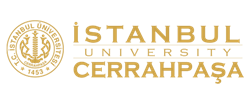Objective: The purpose of this study is to reveal the views of health professionals on social media use, paranoia, and work autonomy during the COVID-19 pandemic. For this purpose, a questionnaire was applied to the healthcare workers who accepted voluntary participation with the convenience sampling method, and the research data were collected.
Methods: In the study, a sample of 302 healthcare workers in 3 tertiary level foundation university hospitals and a secondary-level private hospital, who accepted to participate in the survey voluntarily, is included by convenience sampling. Data were collected using a questionnaire prepared according to a 5-point Likert scale consisting of 3 different scales. Structural equation modeling was done with the help of AMOS program.
Results: Data were analyzed statistically. The mediating role of Paranoia Scale sub-dimensions (F1 and F2) in the effect of social media utility and social media anxiety variables, which are Social Media Use scale sub-dimensions, on working autonomy variable was investigated. Cronbach’s alpha values of the scales used in the study are at “high reliability level.” In the combined reliability values, since composite reliability > 0.70 was found for all variables, the combined reliability condition was met. The necessary condition (average variance extracted > 0.40) was considered sufficient for the mean explained variance values (average variance extracted > 0.50) for all variables or for convergent validity when it was present in all variables (composite reliability > 0.70).
Conclusion: It was found that F1 variable, one of the sub-dimensions of paranoia Scale, had full mediating role on social media utility variable of working autonomy variable and that F2 variable had full mediating role in the effect of social media utility variable on working autonomy variable. It was also determined that the F1 variable did not have a mediating role in the effect of the social media anxiety variable on the working autonomy variable, and the F2 variable had a full mediation role in the effect of the social media anxiety variable on the working autonomy variable. Only healthcare professionals in Istanbul and 4 different private hospitals were included in the study. Expanding the study in public hospitals and with other private hospitals will provide more information on the subject. It is thought that this research will be an original study in terms of getting the opinions of healthcare professionals, especially during the COVID-19 pandemic process. There is no similar study in the literature using the variables and models which were used in this study.
Cite this article as: Düzcü T, Demir Uslu Y, Yıldırım O. Health professionals’ perspective in the context of social media, paranoia, and working autonomy during the COVID-19 pandemic period. Arch Health Sci Res. 2023;10(1):30-37.


.jpg)


